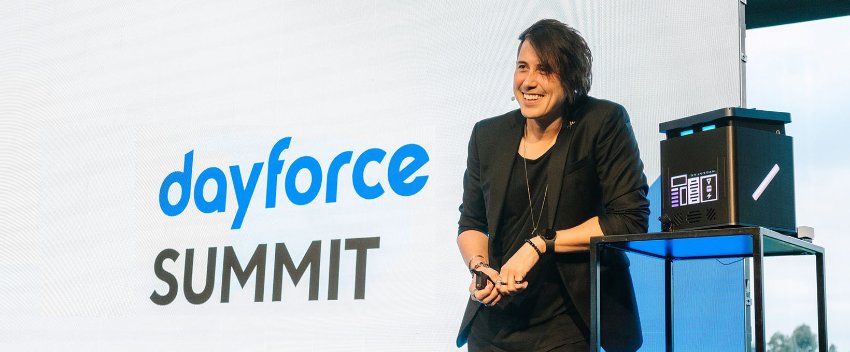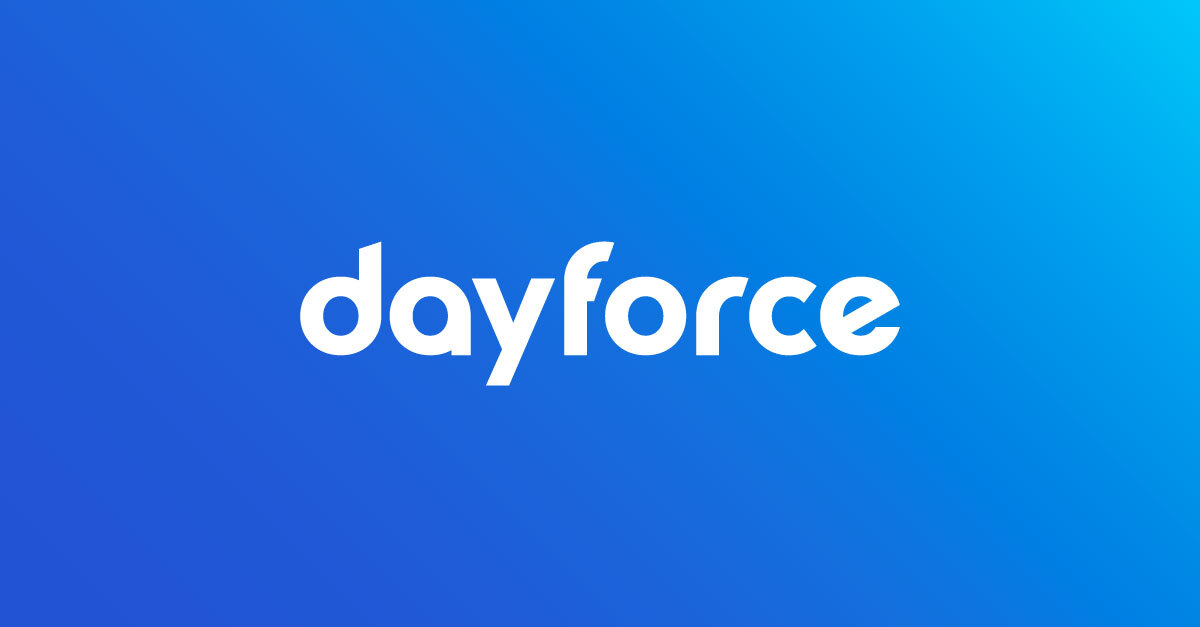The human blueprint for smarter innovation
At Dayforce Summit Melbourne, keynote speaker Dr Jordan Nguyen revealed six rules for using AI with intention and empathy to protect what makes your organisation truly valuable.

Table of Contents
Every week brings new AI tools, features, and possibilities. And for many leaders, this relentless pace of change can bring more questions than answers.
Is AI’s promise overhyped, or is it truly transformative? Which changes are worth paying attention to? And where’s the line between smart adoption and over-reliance?
At this year’s Dayforce Summit Melbourne, biomedical engineer and inventor Dr Jordan Nguyen offered a refreshingly grounded take. Beyond AI's endless possibilities, his approach focuses on what's genuinely useful and how leaders can make technology decisions that truly serve their people.
“I recognise that tech advancements can be a double-edged sword, and that’s why I’m not here to champion more and more technology,” says Dr Nguyen. “Real progress happens when we're intentional about implementation and consider the experience of the people we're serving.”
So, how can business and HR leaders take this mindset and apply it to their organisations? Dr Nguyen outlined six key principles for keeping innovation both human and valuable for your people, your customers, and your long-term growth.
1. Purpose over platform
Dr Nguyen acknowledges the current hype cycle around AI and the pressure many leaders feel to jump on board.
“I can understand why, as we now have access to some very powerful tools,” he says. “But I do recommend trying to resist the pressure to rush onto the AI-hype train to just automate everything. Because you can very quickly lose your creativity, and your people may come to rely on it too much. And that can lead to worse outcomes for your company over time.”
Instead, Dr Nguyen advises leaders to step back and ask: What’s the real problem we’re trying to solve? What’s holding people back from doing their best work? What would genuinely improve the experience for customers and/or employees? “Start with your inspirations, then narrow your focus and be specific on your desired outcome and then test how AI can assist in those goals,” he suggests.
A practical place to begin is to ask “‘what if?”’. Bring together people from across the business and talk about real-world friction points. What could a better experience look like? What would success mean? Then, explore where AI might play a role.
“Putting yourself in the shoes of the people you serve makes a big difference in creating real value. An AI-first approach might deliver cheaper or faster results - but we’re already seeing in the news how that can backfire when technology comes first, and people come second.”
2. Augment the human
Much of the public discourse around AI has centred on job replacement. But Dr Nguyen cautions against making that the foundation of your strategy. “I encourage leaders to think about what’s worth protecting, such as creativity, judgment, and empathy,” he says. “How can you automate the routine or mundane and use these tools to enhance the human experience in a way that adds value and differentiation?”
A useful exercise is to break down roles in your organisation into three categories:
- Tasks that are routine and could be handed off safely.
- Tasks that are familiar but could be sped up, simplified, or enhanced.
- Tasks that are uniquely human and better left untouched.
This framework helps identify where AI can genuinely help and where it risks doing more harm than good. The goal is to give people more space for work that matters to them and your organisation.
“The more you rely on AI, the bigger the potential risk to what makes your organisation unique. So, check in with your teams. What are they uniquely good at? What creates your competitive advantage? Protect that and use AI to enhance it.”
3. Trust is the new currency
Dr Nguyen emphasised that without trust, even the best technological change can go wrong. “We’re moving further into a trust economy, and at the same time, the trust people have in organisations seems to be getting smaller every day,” he says. “People want to understand what’s happening with their data.”
He suggests using an opt-in approach where possible and highlighting how data collection benefits the customer. “Help people understand how their data might be used and how this improves the products or services they use.”
Transparency builds trust, and that means being clear about:
- What data is being collected
- Why it’s being used and how
- Where people can go for support or to opt out.
Dr Nguyen also recommends embedding human-in-the-loop safeguards and regularly reviewing policies as the technology evolves.
4. Learn together, not in silos
At the Dayforce Summit Melbourne, 56% of attendees reported using AI tools on a daily or weekly basis. Meanwhile, 69% said AI is fundamentally shifting the skills needed for business success. The challenge is that it appears much of this adoption is happening in isolation.
“What we’re seeing is a wild west of AI experimentation,” says Dr Nguyen. “Some teams are open about it. Others are hiding it. But without a culture of shared learning, organisations fail to capture those insights and learnings—or worse, increase risks around privacy, security, and over-reliance.”
“The more you rely on AI, the bigger the potential risk to what makes your organisation unique. So, check in with your teams. What are they uniquely good at? What creates your competitive advantage? Protect that and use AI to enhance it.”
To combat this, Dr Nguyen suggests building a culture of open experimentation and shared learning. That could mean:
- Setting aside time for structured AI trials.
- Encouraging employees to document and share their learnings.
- Creating clear guidelines for when, where, and how AI should (or shouldn’t) be used.
This is especially critical for early-career employees. As entry-level tasks become automated, younger workers need new opportunities to learn and grow. Involving them in experimentation helps them develop confidence and gain a better understanding of how decisions are made.
5. Keep the human element where it matters
Dr Nguyen warns that as AI usage becomes more common, the results it creates can start to feel interchangeable. “Remember, these are pattern-recognising machines,” says Dr Nguyen. “If everyone’s using the same tools, you’re going to get very common outputs. So, there is a risk that the more AI does for you without your input, the less value you’ll be creating.”
“The truth is, we’re intrinsically linked to AI from now on - it’s just what’s going to happen. So, you need people who can manage that and make sure you don’t steer away from the human experience. Because if everything is automated, you run the risk of being like every other company in your industry.”
To avoid this, he recommends maintaining a human lens on everything AI creates. Ask if outputs reflect your voice, values, and what your organisation stands for. Consider where your people can bring nuance, perspective, or creativity.
“Find a balance that allows people to share their unique creativity, insights, and experience,” says Dr Nguyen. “Because after every wave of automation, people tend to gravitate back to the human experience.” This is especially critical for early-career employees. As entry-level tasks become automated, younger workers need new opportunities to learn and grow. Involving them in experimentation helps them develop confidence and gain a better understanding of how decisions are made.
6. Start preparing your teams now
Dr Nguyen acknowledges that roles will evolve, and leaders must prepare their people for the transition through new tools, new ways of work, and new ways to care for those most impacted.
In one example, Dr Nguyen shared how students in a New Zealand school began with a single question during an innovation day: What problem do we want to solve? Only after identifying the challenge and mapping possible solutions did they explore how AI might help.
That curiosity-first, tech-second approach helps build ownership and resilience. And it’s a model that workplaces can learn from.
Don’t outsource what makes you human
At the heart of Dr Nguyen’s message is a powerful reminder. “It’s all about balancing tech and humanity, and what that looks like is different for every organisation,” he says. “For AI to help us do the work we’re meant to do, always start with the why, share learning, and never forget the value of protecting what makes us human.”
“The truth is, we’re intrinsically linked to AI from now on - it’s just what’s going to happen. So, you need people who can manage that and make sure you don’t steer away from the human experience. Because if everything is automated, you run the risk of being like every other company in your industry.”
The takeaway is clear: innovation without intention can cost you the very thing that makes your organisation great. However, with the right mindset and principles in place, technology can become a tool for deeper connection, creativity, and impact.
You may also like:
Ready to get started?

